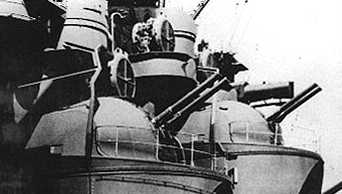
The Type 88 was a submarine weapon which was not widely used. The very similar Type 89 was the first Japanese AAA weapon designed for the purpose and was used on most World War II warships of cruiser size and larger as well as on small destroyers and some auxiliaries. During rebuilds during the 1930s the Type 89 was used to replace many of the older 8 cm/40 (3") 41st Year Type, 8 cm/40 (3") 3rd Year Type and 12 cm/45 (4.7") 10th Year Type AA guns which had armed capital ships and cruisers completed before 1932. During the war many ships had these guns added during refits and repairs in an effort to improve their AA defense.
The Type 89 prototype was proved in 1931 and adopted for service use on 6 February 1932.
The Japanese considered the Type 89 to be a good AAA weapon and it had a fast rate of fire and good elevation and training speeds, especially on the later Mods. Its primary shortcoming was a relatively low muzzle velocity and thus a short range and low AA ceiling. Used a spring rammer cocked by the recoil, similar to other Japanese AAA weapons.
These weapons were of simple construction with autofretted monobloc barrels and breech rings and used horizontal sliding breech-blocks. Total production of Type 89 guns amounted to 1,306 guns, with 836 being manufactured between 1941 and 1945. Of these, 362 were mounted ashore, including 96 in the Yokosuka area and 54 in the Kure area.
Unless otherwise specified, the data that follows is for the Type 89.
| Designation | 12.7 cm/40 (5") Type 88 (Model 1928)
Official Designation: 40 caliber Type 88 12.7 cm Gun --- 12.7 cm/40 (5") Type 89 (Model 1929) Official Designation: 40 caliber Type 89 12.7 cm Gun |
|---|---|
| Ship Class Used On | Type 88: Submarines I.5 and I.6 1 Type 89: Almost all Japanese capital ships, aircraft carriers, cruisers, Matsu and Tachibana class escorts |
| Date Of Design | 1928 / 1929 |
| Date In Service | 1932 |
| Gun Weight | 3.05 tons (3.1 mt) |
| Gun Length oa | 208 in (5.284 m) |
| Bore Length | 200 in (5.080 m) |
| Rifling Length | 175 in (4.450 m) |
| Grooves | (36) 0.060 in deep x 0.261 in (1.52 mm x 6.63 mm) |
| Lands | 0.175 in (4.45 mm) |
| Twist | Uniform RH 1 in 28 |
| Chamber Volume | 549 in3 (9.0 dm3) |
| Rate Of Fire | Type 88: 8 rounds per minute
Type 89: 14 rounds per minute initially, 8 rounds per minute sustained |
- ^A Note on Sources: USNTMJ O-47(N)-1 says that this gun was used on I.5 as does "Naval Weapons of World War Two." Other references say that I.5 carried a single 14 cm/40 11th Year Type gun as commissioned and that a second 14 cm/40 11th Year Type gun was added when her aircraft hanger was removed in 1940 and she was reclassified as an attack submarine. Photographs of I.5 and I.6 are not clear enough to determine which is correct. A photograph on Wikipedia claiming to be I.5 in 1932 shows her with two deck guns. However, she did not carry two deck guns until her aircraft arrangements were removed in 1940. So, either this is not I.5 or the photograph was taken sometime after 1940. The two deck guns in the photograph both appear to be 14 cm/40 11th Year Type guns, similar to the armament carried on other Japanese I-type submarines.
| Type | Fixed |
|---|---|
| Weight of Complete Round | Common Type 0 HE: 75.7 lbs. (34.32 kg)
Common Type 3 IS: 77.2 lbs. (35 kg) Illum: 75.7 lbs. (34.32 kg) |
| Projectile Types and Weights | Common Type 0 HE 1a: 51.7 lbs. (23.45 kg)
Common Type 3 IS 2a: 50.7 lbs. (23.0 kg) ASW 3a: 46.2 lbs. (20.9 kg) Illum 4a: 51.7 lbs. (23.45 kg) |
| Bursting Charge | Common Type 0 HE: 4.2 lbs. (1.88 kg) Shimose
Common Type 3 IS: Contained 43 incendiary tubes and 23 stays ASW: 8.78 lbs. (4.0 kg) |
| Projectile Length | Common Type 0 HE: 17.2 in (43.7 cm)
Common Type 3 IS: 17.2 in (43.7 cm) ASW: 17.2 in (43.7 cm) |
| Complete Round Length | 38.2 in (97.1 cm) |
| Cartridge Case Type, Size and Empty Weight | Brass, 127 x 583 mm, about 15.23 lbs. (6.9 kg) |
| Propellant Charge | 8.77 lbs. (3.98 kg) 21 DC
Cartridge: 26.3 lbs. (12 kg) |
| Muzzle Velocity | Common Type 0 HE: 2,360 - 2,379 fps (700 - 725 mps)
Common Type 3 IS: 2,360 - 2,379 fps (700 - 725 mps) ASW: 820 fps (250 mps) Illum: 2,362 fps (720 mps) |
| Working Pressure | 16 tons/in2 (2,500 kg/cm2) |
| Approximate Barrel Life | 800 - 1500 rounds |
| Ammunition stowage per gun | Yamato: 300 rounds
Cruisers with 4 guns: 250 rounds Cruisers with 8 guns: 200 rounds Shôkaku: 250 rounds Others: N/A |
- ^Common Type 0 HE was supplied with time fuzes for AA defense. US Naval Technical Mission to Japan report O-19 says that this round had an effective radius of 28.6 yards (26 m) but this seems to be optimistic.
- ^IS is my abbreviation for the incendiary shrapnel round (sankaidan) intended for AA use.
- ^The flat-nosed ASW projectile was issued in 1943 following extensive testing. This is listed in US Naval Technical Mission to Japan report O-19 as being able to penetrate a 9.85 in (25 cm) plate of Ducol Steel (roughly equivalent to USN HTS) at a depth of 26 feet (8 meters). Range for this performance is not given. However, based upon other errors in this document, I would believe this to be an error in metric to english unit conversion and that the actual performance would more likely be 0.985 in (2.5 cm). ASW may have been issued only to escorts.
- ^Illumination rounds were rated at 680,000 candle power and had a maximum range of 15,910 yards (14,550 m) and an effective range of 8,750 yards (8,000 m).
| Elevation | Range |
|---|---|
| 45 degrees | 16,185 yards (14,800 m) |
| AA Ceiling @ 75 degrees | 30,840 feet (9,400 m) |
| Elevation | Range |
|---|---|
| 40 degrees | 4,700 yards (4,300 m) |
Minimum range of ASW shell is given as 875 yards (800 m). Ranges less than this tended to ricochet.
| Designation | Type 88 Single Mount for Submarines 1b I.5 (1): A I.6 (1): A mod 1 Type 89 Single Mount for Escorts
Type 89 Twin Mounts for Battleships, Cruisers and Carriers 2b 3b Battleships
Cruisers 6b Carriers and Auxiliaries
Escorts
|
|---|---|
| Weight | Type 88
A and A mod 1: 8.7 tons (8.8 mt) Type 89
|
| Elevation | Type 88: - 7 / +75 degrees
Type 89: -7 / +90 degrees (one source says -8 / +85 degrees) |
| Elevation Rate | Type 88
About 4 degrees per second - Manual operation, only Type 89
|
| Train | Amidships Mounts: About -70 / +70 degrees
Bow and Stern Mounts: About -150 / +150 degrees |
| Train Rate | Type 88
About 4 degrees per second - Manual operation, only Type 89
|
| Gun recoil | 17.75 in (45.0 cm) |
| Loading Angle | Any |
- ^These submarine mountings were manually operated and ammunition was supplied via pneumatic hoists. Mounting designations as per USNMTJ O-47(N)-1.
- ^All twin mountings were to a generally similar design and used electrically driven oil hydraulic gear for both training and elevation. A loading platform was attached to the rear of the cradle as the trunnions were 98 inches (249 cm) above the roller path. This elevated with the guns to keep the loaders at the best position for loading shells into the loading tray. Twin mountings usually had one or two hoists per mounting, but these were not always located near the guns. For example, the Unryû class carrier Katsuragi had one electrical dredger hoist that was located 32 meters (105 feet) and two bulkheads away from the mounting it served.
- ^The A1 mount was unshielded. The A1 Mod 1 added a shield. The shield for the A1 Mod 2 had a slightly different shield shape and was gas-proof. The A1 Mod 3 had a thicker shield to enable them to withstand the blast from the 46 cm guns on the Yamato class. The B1 mounting had no shield but did have a more powerful electric training motor, giving it faster elevation and training speeds.
- ^Older battleships of the Kongô, Fuso, Ise and Nagato classes had their 8 cm (3") 41st Year Type and 3rd Year Type AA guns removed during their 1930s rebuilds and replaced with the new 12.7 cm/40 (5") Type 89 in four twin mounts. Kongô and Haruna had two additional twin mountings added in 1944. Ise and Hyuga were given four additional twin mountings in 1943 when they were converted to hybrid carriers.
- ^Yamato and Musashi had their two amidships 15.5 cm/60 (6.1") triple mountings removed in 1944. Yamato was then given six additional 12.7 cm/40 A1 unshielded twin mountings which were installed in place of the original 12.7 cm/40 A1 Mod 3 mountings. These latter mountings were relocated a deck lower. After this refit, Yamato had a total of twenty-four 12.7 cm/40 guns. Musashi was also to receive six additional twin mountings, but these were not available prior to her loss.
- ^The Japanese plan for those older cruisers equipped with 12 cm/45 (4.7") 10th Year Type secondaries was to rearm them with 12.7 cm/40 (5") Type 89 guns during their 1930s rebuilds. However, this program was only partially completed prior to the start of the Pacific War. It proved impossible to find the weight and space to mount these heavier and larger weapons on the Furutaka and Aoba classes and they retained their four 12 cm/45 guns throughout the rest of their service careers. All four cruisers of the Myôkô class had their six single 4.7 cm/45 guns replaced with four 12.7 cm/40 twin mountings during refits in 1934 - 1935. For the Takao class, cruisers Atago and Takao were rearmed with four 12.7 cm/40 twin mountings in 1942. Maya was badly damaged at Rabul on 5 November 1943 by aircraft from USS Saratoga (CV-3). She was sent back to Japan for repairs and then converted into an AA cruiser. Her No. 3 turret and all 12 cm/45 (4.7") AA guns were removed and she was then armed with eight 20 cm (8.0") No. 2 guns and twelve 12.7 cm/40 (5.0") AA guns along with thirty-five 25 mm and thirty-six 13 mm MGs. It had been planned to similarly convert sister-ship Chokai, but this was not carried out and she retained her four 12 cm/45 guns throughout her career. Newer large cruisers starting with the Mogami class were armed with four twin 12.7 cm/40 mountings as completed.
- ^When the Katori class training cruisers Kashima and Kashii were converted into ASW sweeping ships in 1944, their torpedo tubes were removed and replaced with two twin 12.7 cm/40 mountings, giving them a total of three of these mountings.
- ^There was some planning in late 1942 - early 1943 for converting the Mogami class cruisers Suzuya and Kumano into anti-aircraft cruisers by removing all of their 20.3 cm (8") guns and replacing them with 12.7 cm/40 twin mounts but this conversion was not implemented.
- ^Most surviving 5,500 ton cruisers lost two of their stern 14 cm/50 (5.5") Type 3 guns in 1942-43 in order to fit a twin 12.7 cm/40 (5") mounting and additional 25 mm Type 96 AA guns. Light cruiser Isuzu was further modified by converting her to an anti-aircraft cruiser in 1944. All her remaining 14 cm/50 guns were removed and she was then armed with three twin 12.7 cm/40 mountings along with 11 triple and 17 single 25 mm Type 96 AA guns. Isuzu was unique among the light cruisers in that she was also given a Type 94 high-angle fire-control system. Kitakami when modified into a Kaiten (suicide torpedo) carrier had all her 14 cm/50 guns and torpedo tubes removed and then given two 12.7 cm/40 twin mountings.
- ^12.112.212.3The three submarine depot ships of the Taigei and Tsurugizaki classes and the two seaplane tenders of the Chiyoda class were originally armed with two twin 12.7 cm/40 mountings as completed. All five of these ships were later rearmed with four twin 12.7 cm/40 mountings when they were converted to aircraft carriers during the war.
- Ramming was via a spring-powered mechanism that was cocked by the recoil force when the gun fired. The mechanism had a removable pulley arrangement where the gun was depressed to cock the rammer for the first round. A misfire meant that the subsequent round needed to be rammed by hand, unless there was time to reattach the pulley and cycle the gun elevation. Fuze-setting cabinets were on the right side of the mount and were connected to the fuze setting mechanism located on the breech face by a rod gearing that passed through the trunnions. The fuze setting mechanism set the fuze as the shell tray was moved from the loading position to the ramming position. Loading trays were manually operated. The fuze setting was via a toothed bar that engaged the fuze time ring on the shell. See illustration below. In concept, this appears very similar to the British fuze setters used on 2-pdr guns which Japan imported during the 1920s and 1930s and may have been inspired by them.
- In the photographs below of land-based single gun mountings, the guns do not appear to have either fuze setters nor loading trays. Fuzes may have been set by hand and the shells rammed by hand into the guns.
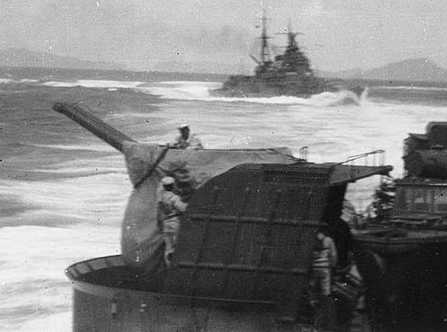
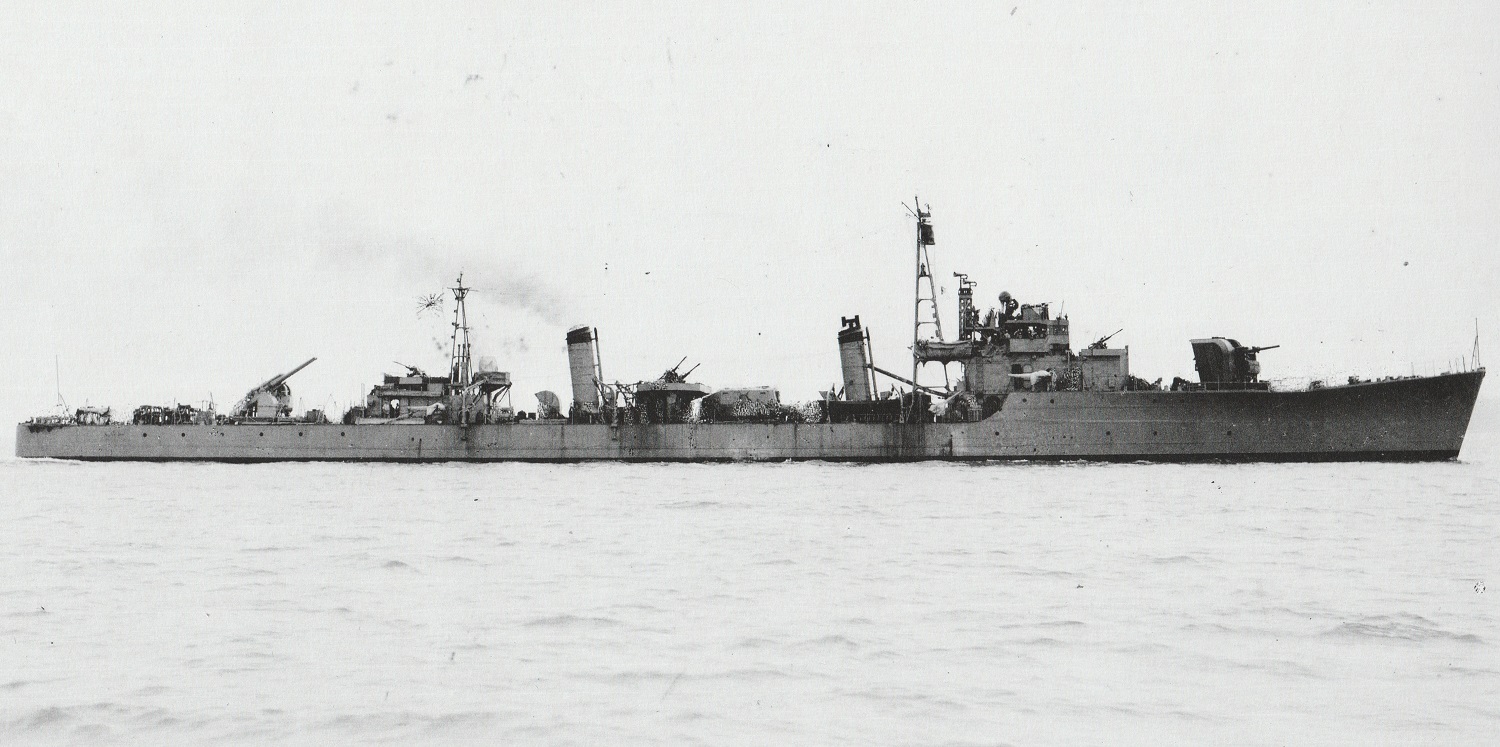
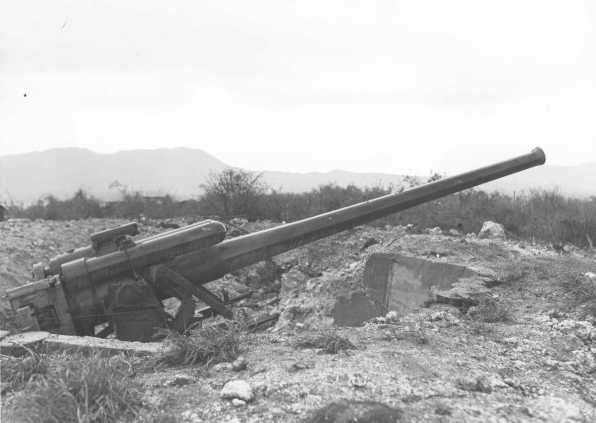
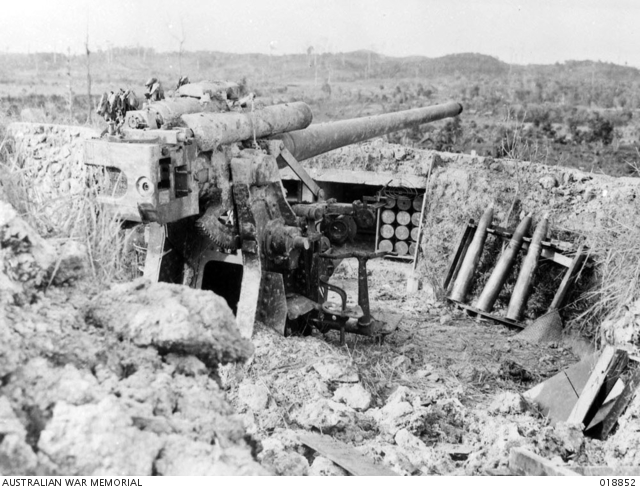
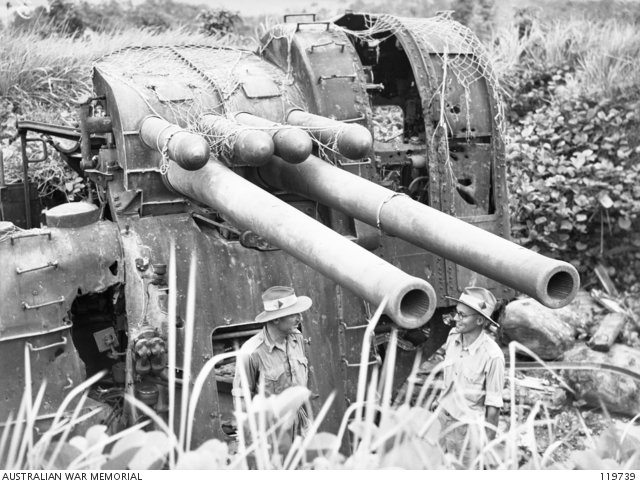
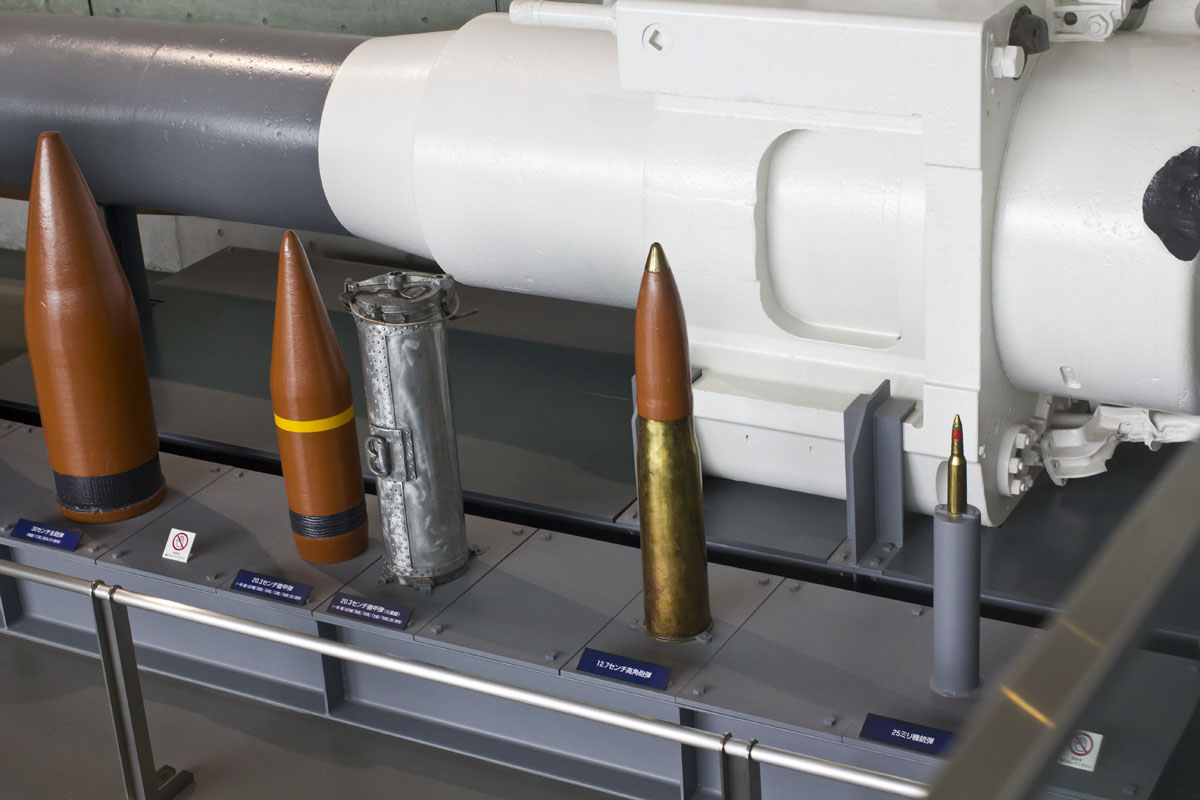
30 cm main gun shell
20.3 cm Common shell
20.3 cm powder canister
12.7 cm high angle gun shell
25 mm machine gun shell
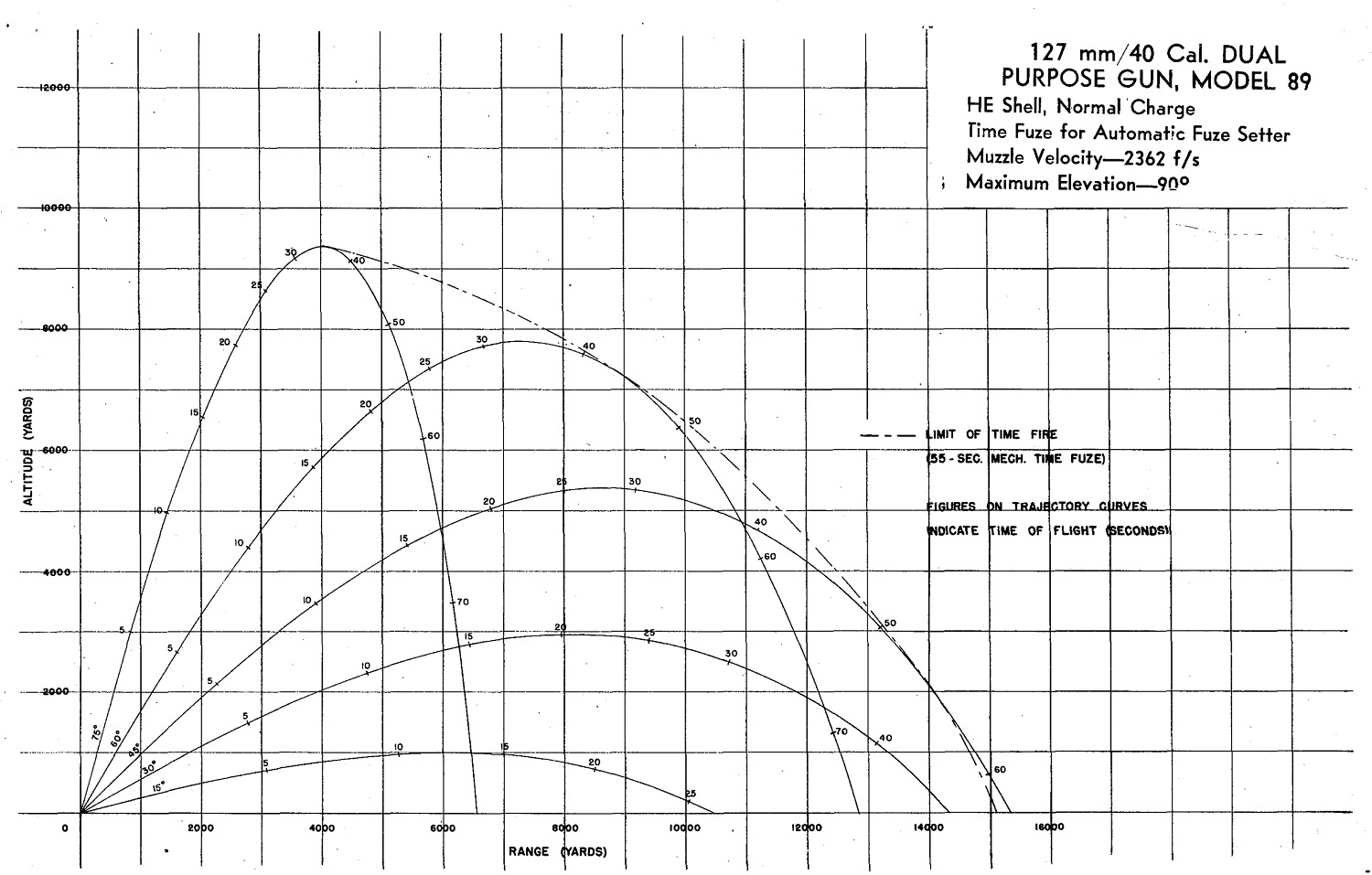
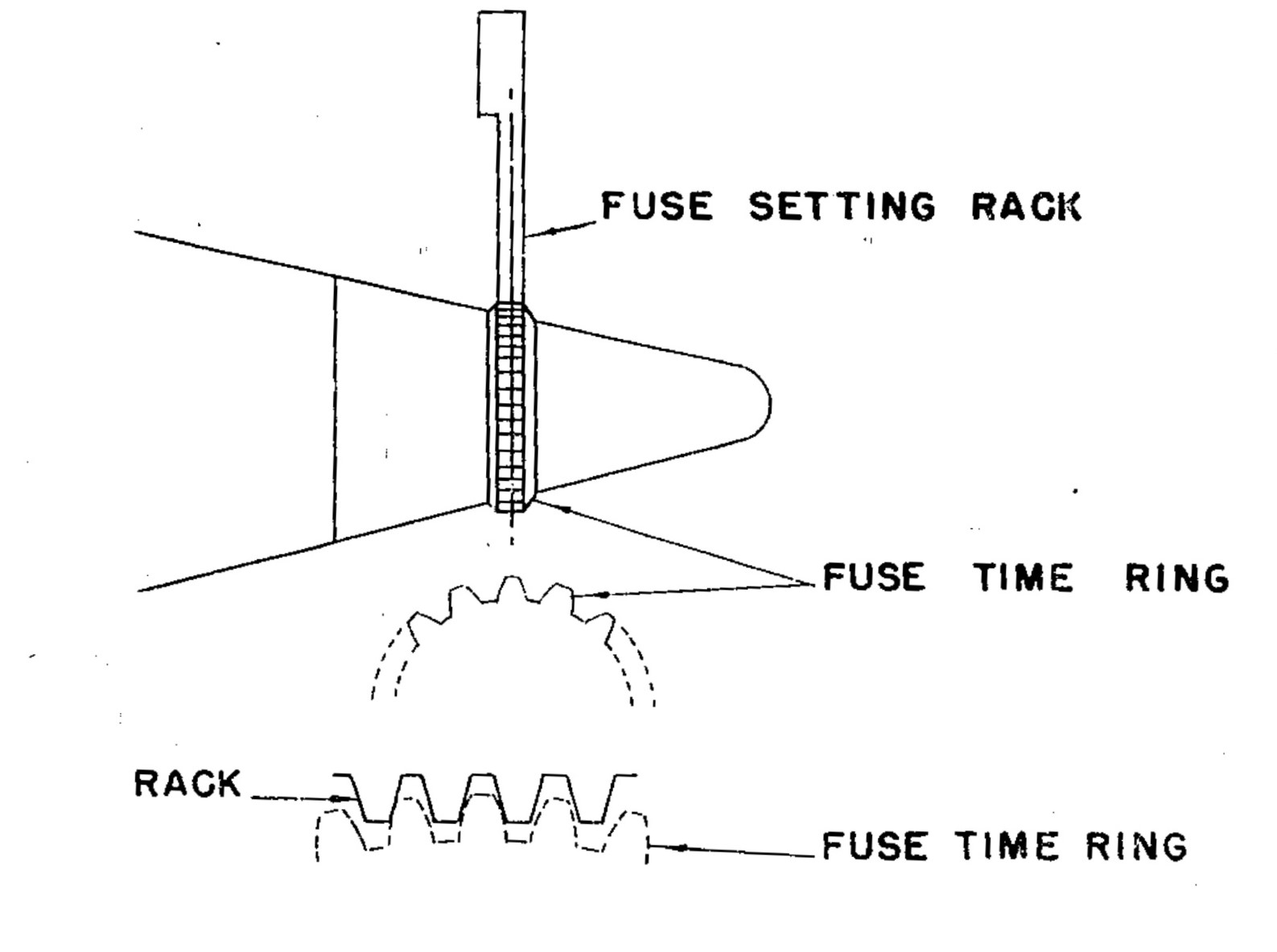
"Naval Weapons of World War Two" by John Campbell
"Battleships: Axis and Neutral Battleships in World War II" by W.H. Garzke, Jr. and R.O. Dulin, Jr.
"The Japanese Warships of the Pacific War" by The Koku-Fan
"Destroyers: Selected Photos from the Archives of the Kure Maritime Museum - The Best from the
Collection of Shizuo Fukui's Photos of Japanese Warships" by Kure Maritime Museum (Editors) and Kazushige Todaka
"Legends of Warfare: Sôryû, Hiryû & Unryû-Class Aircraft Carriers" and "Legends of Warfare:
Shôkaku-Class Aircraft Carriers" both by Hans Lengerer and Lars Ahlberg
"Anatomy of the Ship: The Heavy Cruiser Takao" by Janusz Skulksi
"The Imperial Japanese Navy in the Pacific War" by Mark E. Stille
"Japanese Warships of World War II" by A.J. Watts
"Japanese Cruisers of the Pacific War" by Eric Lacroix and Linton Wells II
---
"Catalog of Enemy Material: 01 March 1945" by Office Chief of Ordnance (US Army)
US Naval Technical Mission to Japan report O-19: Japanese Projectiles General Types
US Naval Technical Mission to Japan report O-47(N)-1: Japanese Naval Guns and Mounts-Article 1, Mounts Under 18"
US Naval Technical Mission to Japan report O-48: Japanese Fuze-Setting Equipment
03 December 2008 - Benchmark
12 March 2011 - Added gun mounting information
18 December 2011 - Added information for minor Japanese warships
16 July 2015 - Added to notes regarding battleship and cruiser rebuilds
26 September 2016 - Converted to HTML 5 format and added notes regarding use on light and training cruisers
23 October 2016 - Additional information on Yamato mountings
07 February 2018 - Reorganized notes
16 August 2018 - Minor changes
21 March 2019 - Added note regarding time fuzes on Common Type 0 HE
06 January 2021 - Added detail about how loading platform elevated with the guns, added note about land-based single guns,
details and sketch about fuze setting and note about I.5
31 July 2021 - Minor changes for clarity
14 September 2021 - Added photograph of Take
09 October 2022 - Added information on rearmament of Kitakami
03 January 2023 - Added trajectory chart
01 July 2023 - Added mounting information for Hiryû, Shôkaku and Unryû classes
